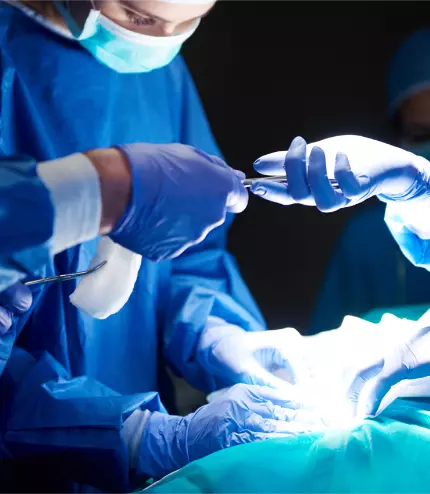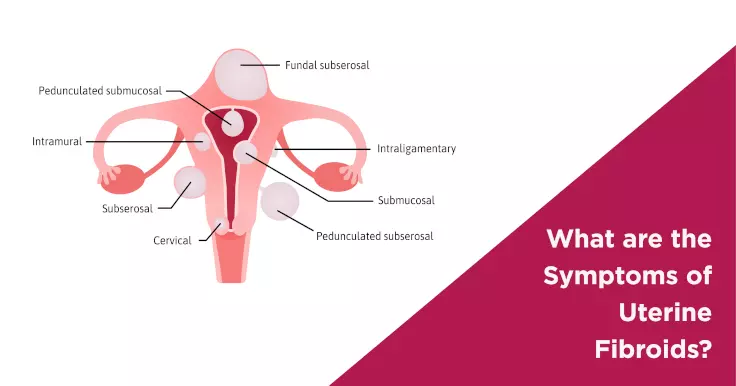
Understanding the Symptoms, Causes, and Types of Uterine Fibroids
Uterine fibroids are growths that can occur in the uterus of women of reproductive age, with some women experiencing symptoms such as heavy menstrual bleeding, pelvic pain, and constipation. Fibroids are categorised into three types, and the causes of fibroids are not yet fully understood but may involve genetic changes, hormonal changes. Imaging tests such as ultrasound or MRI may be conducted to diagnose fibroids, and treatment options include medication, non-invasive or minimally invasive surgery, or laparoscopic surgery.
Fibroids may impact pregnancy and raise the risk of certain complications, and research indicates that certain demographics may have a higher chance of developing fibroids and experiencing severe symptoms. Risk factors include having family members with fibroids, being obese, and eating a lot of red meat. Hormones, genetics, and diet may all play a role in the development and growth of fibroids.
Fertility specialists can find fibroids during a pelvic exam or through imaging tests like ultrasound, and treatment options for fibroids aim to manage symptoms or shrink or remove the fibroids. Hormones like estrogen and progesterone can make fibroids grow, but they may stop growing or shrink after menopause.
Effective Management of Uterine Fibroids
As said earlier, uterine fibroids are noncancerous growths that can develop in the uterus and cause pain, heavy bleeding, and pressure on surrounding organs. Treatment options vary depending on the size, number, and location of the fibroids, as well as the severity of the symptoms. Treatment may include medication, noninvasive procedures such as ultrasound or MRI-guided focused ultrasound, or surgical options like myomectomy or hysterectomy. It is important to discuss options with a fertility specialist to determine the best course of action for each individual.
The cause of fibroids remains unknown, but hormonal imbalances, age, obesity, and family history may increase the likelihood of developing them. While many fibroids do not cause symptoms, some can develop into a rare and potentially dangerous form of cancer called leiomyosarcoma.
Treatment options for uterine fibroids depend on individual circumstances, including the patient's age and fertility goals. Some patients may only need careful monitoring over time, while others may require medication, surgery, or a combination of both. It is important to discuss all options with a medical professional to determine the best course of action for each patient.

Hysteroscopy:
A Minimally Invasive Procedure for Diagnosing and Treating Uterine Conditions
Hysteroscopy is a minimally invasive surgical procedure that allows fertility specialists to examine the inside of the uterus using a thin, lighted tube called a hysteroscope. It is typically done under general anesthesia and can diagnose and treat conditions such as submucosal fibroids, polyps, and adhesions that can affect fertility.
Hysteroscopy is a versatile and effective procedure that can diagnose and treat many uterine problems, including those that interfere with the implantation of an embryo and prevent a successful pregnancy. Overall, hysteroscopy is a valuable tool for fertility specialists to improve the chances of conception and a successful pregnancy.


The Role of Laparoscopy Surgery in Diagnosing and Treating Fertility Issues
Laparoscopy is another minimally invasive surgical procedure that allows a fertility specialist to examine the inside of the abdomen and pelvis. During a laparoscopy, a small incision is made near the belly button, and a laparoscope is inserted. The laparoscope has a camera that allows the fertility specialist to see the inside of the abdomen on a screen.
Laparoscopy surgery can be used to diagnose and treat conditions that can affect fertility, such as endometriosis, ovarian cysts, and tubal blockages. Endometriosis is a condition where the tissue that lines the uterus grows outside the uterus, causing pain and infertility. Laparoscopy surgery can remove the extra tissue and improve fertility. Ovarian cysts can also interfere with fertility, and laparoscopy surgery can remove them. Tubal blockages can prevent the fertilisation of the egg, and laparoscopy surgery can diagnose tubal blockage and may help in removing certain blockages.
How Can Surgery Enhance Female Fertility?
Surgery can help women with infertility problems. Hysteroscopy surgery can find and fix issues like fibroids, polyps, and adhesions, which can affect the chances of getting pregnant. Laparoscopy surgery can also find and treat problems like endometriosis, cysts, and blockages, which can improve the chances of a successful pregnancy. Surgery can increase the chances of conceiving and carrying a healthy pregnancy. If you have infertility problems, talk to your fertility specialist about surgery options that may help you.

 Infertility Counselling
Infertility Counselling Female Infertility Treatment
Female Infertility Treatment Andrology Treatment
Andrology Treatment Fertility Enhancing Surgeries - Female
Fertility Enhancing Surgeries - Female Fertility Enhancing Surgeries - Male
Fertility Enhancing Surgeries - Male Endoscopy Treatment
Endoscopy Treatment IUI Treatment
IUI Treatment IVF Treatment
IVF Treatment ICSI Treatment
ICSI Treatment Advanced IVF Solutions
Advanced IVF Solutions Embryology
Embryology Vitrification Egg, Embryo, Sperm Freezing
Vitrification Egg, Embryo, Sperm Freezing Preimplantation Genetic Testing (PGT)
Preimplantation Genetic Testing (PGT) Donation Program Embryo / Egg / Sperm
Donation Program Embryo / Egg / Sperm Self-cycleTM IVF
Self-cycleTM IVF

 Self-cycleTM IVF
Self-cycleTM IVF










